A numerical assessment of the effect of particle size distribution and operation parameters on sand retention over sand screens
Yuqing Feng A , Xavier Choi A , Bailin Wu A , Qinggong Wang A B , Chong Yau Wong A , Seng Lim A , Bahrom Madon C , Maharon Jadid C , Zurita Johar C , Amir Zamberi C and Amira Shaffee CA CSIRO.
B Tsinghua University.
C PETRONAS.
The APPEA Journal 55(2) 476-476 https://doi.org/10.1071/AJ14111
Published: 2015
Abstract
Sand screens are often installed in sanding prone wellbores to control sand production. A selection of optimal sand screen apertures is required to minimise sand production and maximise fluid production. This has been accomplished historically on empirical correlations, rules of thumb and laboratory sand retention experiments. These methodologies have a number of limitations that can lead to different screen types and sub-optimal screen apertures to be selected.
Using discrete element models (DEMs) many design/operating parameters similar to a specific wellbore condition can be simulated and tested in parallel. Most importantly, the detailed particle scale information helps to give a detailed understanding of the underlying mechanisms controlling the sand retention process.
This extended abstract presents an investigation of the sand production problem from wire wrapped screens and slotted liners through the use of a DEM for the solid flow with fluid flow coupling using computational fluid dynamics (CFD).
Information about particle sizes and distributions incorporated in the DEM model are based on measurement data from reservoir sands. The focus is on the effect of particle size distributions, particle concentration, and the slot width on sand retention across a slotted sand screen.
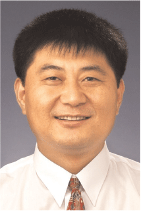
Yuqing Feng (B Eng, 1992; M Eng, 1995; PhD, 2004, Materials Sci&Eng, University of New South Wales) is a senior research scientist in the CSIRO Mineral Resources flagship. His expertise is in the development of advanced computational models for multiphase complex flow systems involving bubbles, particles and droplets, with a focus on its applications in various process industries, including mineral processing, light metal production, petroleum engineering and advanced manufacturing. |
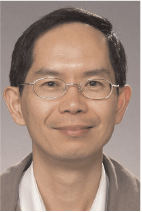
Xavier Choi (B Eng, Civil Eng, 1980; PhD, Geomechanics, 1984, Monash University) is a senior principal research scientist in the CSIRO Energy flagship. His expertise is in the numerical modelling of multiphysics and multiscale problems in civil, mining and petroleum geomechanics. Member: SPE. |
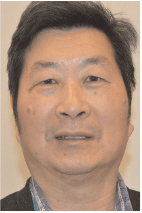
Bailin Wu (B Eng, Mining Eng, 1982, Shandong College of Science and Technology; MSc Rock Mechanics, 1985, Chinese Academy of Sciences; DIC & PhD Rock Mechanics, 1991, Imperial College) is a research scientist in the CSIRO Energy flagship, where he is a project leader on sand production and wellbore stability. Prior to joining CSIRO, he was a rock mechanics engineer with BP, a geomechanics specialist and team leader with Schlumberger. Member: SPE. |
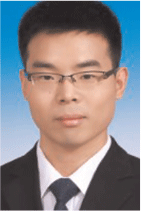
Qinggong Wang (B Eng, 2009; M Eng, 2011, Thermal Eng, Harbin Institute of Technology, China) is a PhD student at the Department of Thermal Engineering, Tsinghua University, China. His PhD topic is on the numerical modelling of particulate multiphase flow in coal beneficiation fluidized beds. He joined CSIRO as a visiting PhD student from November 2013 for nine months through the support of China Scholarship Council (CSC). |
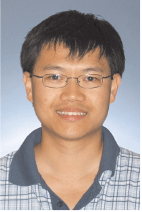
Chong Yau Wong obtained his mechanical engineering degree (Class I Honours) from the University of Adelaide in 2000 and his doctorate from the same institution in 2004. Chong then worked as a post-doctoral fellow specialising in laser diagnostics (particle image velocimetry and laser Doppler velocimetry) for two-phase flows at the University of Adelaide until 2006. He then investigated the structure of turbulent boundary layer flows with PIV/Stereoscopic-PIV systems at Monash University until early 2008 when he joined CSIRO. Chong now works at CSIRO as a research scientist and is involved with industrial projects involving multiphase separation technologies, droplet dynamics, multiphase erosion, sand transportation for the minerals and petroleum industries, and the industrial scale-up and separation of microalgae for bio-fuel production. He has published more than 50 conference and journal papers on fundamental and applied fluid mechanics and particle erosion. |

Seng Lim (B Eng, Chem Eng, 1988; PhD, Chem Eng, 1992, Adelaide University) is a research group leader in the CSIRO Energy flagship where he leads and manages capability group and industry research projects consisting of multidisciplinary teams in the oil, gas and fuels domain. He is a project manager for the sand management research project at CSIRO and also a specialist in powder and particulate flow systems and a member of SPE. |
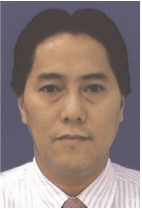
Bahrom Madon (B Eng, Petroleum Eng, 1990, University of Technology, Malaysia) is a senior manager in PETRONAS, where he leads and manages specialised Studies group to identify, recommend and implement new technology application by conducting feasibility study that includes performing technical risks as well as cost analysis to enhance the value of PETRONAS upstream asset. He is also a principal engineer focusing on well technology-related areas such as design and operation of sandface completion, sand control and artificial lift. |
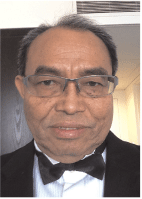
Maharon Jadid obtained his chemical engineering degree (hons) in 1976 from the University of Malaya (Kuala Lumpur, Malaysia). He started working as a wellsite petroleum engineer for Shell in Sarawak/Sabah. Including some five years of overseas postings in UK and Norway, Maharon has worked as a senior petroleum engineer at Shell for some 19 years. After a short stint in Crest Petroleum, he joined PETRONAS Carigali Sdn. Berhad in 2004 as a staff production technologist. He was promoted as principal and eventually as custodian production technologist specialising in sand face completion and sand control management. He is the champion and advisor for subsurface sand onset prediction and sand erosion research for PETRONAS. |
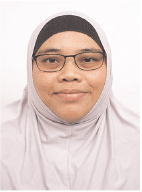
Zurita Johar graduated from Universiti Teknologi Malaysia with a degree in petroleum engineering in 2000 and started her career at PETRONAS in January 2002. She joined the Production Technology Department (PET) and started working for Field Development Plan (FDP) for multi-field gas development. In 2007, she was transferred to Myanmar to support production enhancement and well surveillance activities. She was the manager of New Technology & Deepwater since 2010, prior to becoming a staff production technologist in the specialised studies section of PET. She has led two major research and development projects in integrated sand management with CSIRO Australia. |

M. Shahrul Amir B. Zamberi obtained his chemical and process engineering degree (hons) in 2006 from the University of Canterbury (Christchurch, New Zealand). He started his career at PETRONAS as a process engineer in the LNG business for two years before pursuing his interest in research at PETRONAS’s Technology and Engineering (T&E) Division. For the past five years, he has focused on the development and application of new technologies on sand control and management. He has authored and co-authored more than 20 technical publications and reports, and is the inventor of several patents. |

Amira Shaffee (B Eng, Chem Eng, 2008, Universiti Teknologi PETRONAS) started her career as an engineer in 2009 and since then has been involved in various research and development and technical consultancy projects in solving oil and gas field challenges related to Sand Management. She is now with PETRONAS Group Technical Solutions and her areas of focus include geomechanics, sand production prediction, erosion and transport. |
References
Chanpura, R.A., Hodge, R.M., Andrew, J.S., Toffanin, E.P., Moen, T., and Parlar, M., 2011—A review of screen selection for standalone applications and a new methodology. SPE Drilling and Completions, March.Constien, V., and Skidmore, V., 2006—Standalone Screen Selection Using Performance Master Curves, Paper SPE 98363 presented at SPE International Symposium and Exhibition on Formation Damage Control, Lafayette, Louisiana, 15–17 February.
Feng, Y.Q., Choi, X., Wu, B.L., and Wong, C., 2012—Evaluation of sand screen performance using discrete element models, SPE158671.
Feng, Y.Q., and Yu, A.B. (2004). Assessment of model formulations in the discrete particle simulation of gas-solid flow. Industrial and Engineering Chemistry Research 43, 8,378–90.
Feng, Y.Q., and Yu, A.B. (2007). Microdynamic modelling and analysis of the fluidisation and segregation of binary mixtures of particles. Chemical Engineering Science 62, 256–68.
Mathisen, A.M., Aastveit, G.L., and Alteraas, E., 2007—Successful installation of standalone sand screen in more than 200 wells-The importance of screen selection process and fluid qualification, Paper SPE 107539, SPE European Formation Damage Conference, The Hague, The Netherlands, 30 May–1 June.
Mondal, S., Sharma, M.M., Chanpura, R.A., Parlar, M., and Ayoub, J.A., 2010—Numerical simulation of screen performance in standalone screen applications for sand control, Paper SPE presented, SPE Annual Technical Conference and Exhibition, Florence, Italy, 19–22 September, https://doi.org/ 10.2118/134326-MS.
Penberthy, W.L., and Shaughnessy, C.M., 1992—Sand Control, SPE Series on Special Topics Volume 1, Richardson, Texas, USA.
Zhu, H.P., Zhou, Z.Y., Yang, R.Y., and Yu, A.B. (2008). Discrete particle simulation of particulate systems: A review of major applications and findings. Chemical Engineering Science 63, 5,728–70.


